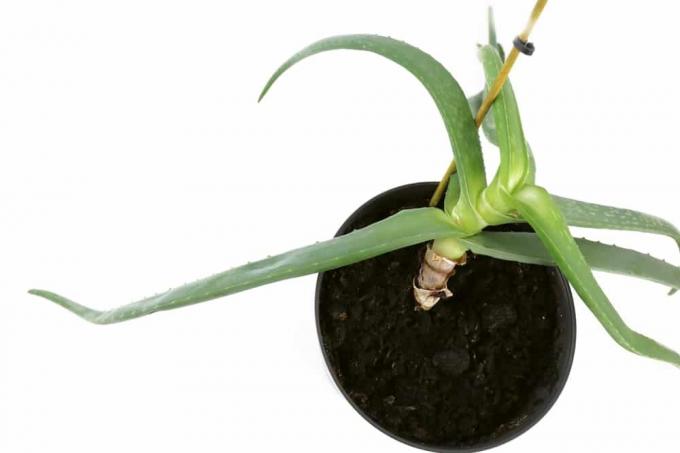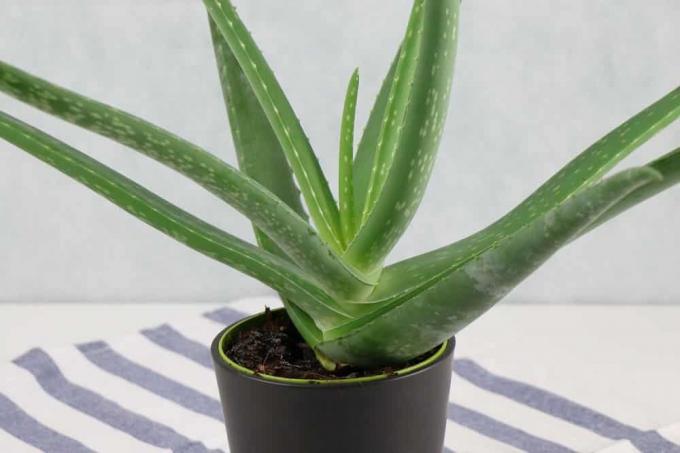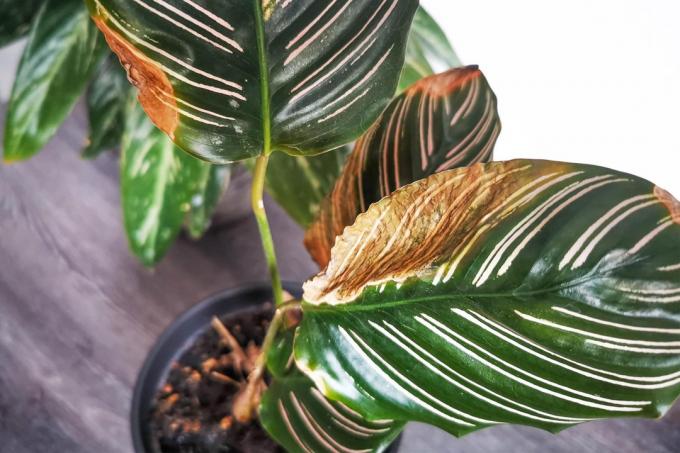

Table of contents
- Ideal time for repotting
- Instructions for repotting
- choose pot
- create drainage
- Implement aloe vera
- Fill up with substrate
- choose location
- Further care
Aloe vera is an exotic beauty that is very popular with many plant lovers. Although its requirements are very specific, the succulent copes well with living room conditions. For healthy growth, the plant should be repotted regularly. In these step-by-step instructions you will read everything you need to know about repotting.
Ideal time for repotting
The aloe vera can be repotted all year round. If the succulent plant is in full bloom, you should refrain from repotting measures. This means stress for the plant, which significantly affects flowering. Late spring is ideal, when the aloe has already awakened from hibernation. Between May and June, the sunlight ensures that the plant can recover quickly in the new pot. You can also transplant the aloe in the fall. How often you have to repot the plant depends on the growth:
- a cycle of two to three years is usual
- when the substrate is fully rooted
- at the latest when roots grow out of the substrate and drainage holes
Instructions for repotting
When it comes time to put the succulent in a new pot, some preparation should be made. Repotting is done quickly so you can enjoy the lush growth of the desert beauty. After transplanting, pay attention to the optimal location and proper care so that the plant settles in well.
choose pot

Choosing the right bucket is more important with aloe vera than with other plants. Avoid flower pots made of light material such as plastic. These variants are not able to regulate the water balance. There is a risk that the roots will die due to excessive moisture. Models that taper downwards are just as unsuitable. They look nice, but they don't offer the plant any stability. Larger specimens in particular are very top-heavy and would easily tip over in the conically shaped pots. This puts you at risk of breaking the leaves. The ideal pot looks like this:
- heavy and robust bucket
- Materials such as clay or terracotta are ideal
- wide base
- at least one drainage hole
- not painted, but left natural
A notice:
Did you know that aloe vera can seal your wounds? In this way, the plant protects itself against excessive water loss, but visible scars remain.
create drainage
Make sure there is good water drainage so that the real aloe does not get wet feet. The more permeable and coarse the substrate, the less water it can store. It quickly flows to the bottom of the pot and accumulates in the saucer. Drainage directly on the bottom of the pot makes no sense if you do not mix soil with the substrate. Instead, provide a buffer in the saucer or planter. Cover the ground with gravel or smaller stones and place the plant pot on top.
Tip:
Normally, the collected irrigation water increases the humidity, which is good for many plants. With aloe vera, you should drain excess water immediately, because the succulent likes very dry air.
Implement aloe vera
Carefully lift the plant out of its old pot. You should proceed with great care, because the leaves break easily. Put on gloves to protect yourself from the fine spikes. So that the succulent does not stand directly on the ground in the new pot, you should fill in some sand and gravel before inserting it. The root ball is then placed in the new bucket.
Fill up with substrate
The succulent has adapted to a more hostile habitat where the soil is sandy and nutrient poor. Calcareous soils are tolerated. The substrate does not store water, so aloe species had to develop special structures to store water. When rain falls, they absorb water through their roots and store it in the fleshy leaves. Therefore, the real aloe does not tolerate waterlogging. A substrate in which the water drains off quickly is ideal. You can buy cactus or succulent soil for the new pot, but the compositions vary depending on the manufacturer. Make sure that the soil does not contain clay but large amounts of sand. If you want to be on the safe side, you can make a mix yourself:
- pumice
- coarse sand or perlite
- granite chips
choose location

Aloe vera originally comes from tropical and subtropical climate zones. Warm temperatures and high humidity typically prevail here. However, the plant has adapted to locations that get a lot of sun and are very dry. High humidity does not do the plant any good, which is why a place in the bathroom is rather unsuitable. The plant feels comfortable on the windowsill in the living room when it is not exposed to the blazing sun. Too much sun causes the leaves to turn brown. A west- or east-facing window with a few hours of sunshine in the morning and evening is ideal. During the summer months, the aloe vera can be placed outside, as long as a few aspects are observed:
- gradually get used to the location
- choose a safe place
- does not tolerate wind or rain
- bring in in the fall
Tip:
Place the freshly repotted plant in a sunny place in the house for the first few days so that it can settle into the new substrate.
Further care
The real aloe proves to be an extremely easy-care plant if it is placed in the right location. In the first few weeks after repotting, you should not water the plant. If she has settled in well, you can give the aloe a shot glass full of water every four weeks. The plant does not need more moisture. You can completely do without fertilizer since the plant is adapted to nutrient-poor locations. However, occasional fertilization with a special fertilizer does not harm the real aloe. If you want to harvest the leaves for consumption, you should use an organic fertilizer without chemical additives. Avoid wetting the leaves with water. This quickly leads to the formation of rot.
Tip:
A decrease in the elasticity or color changes in the leaves are an indication that you should increase the watering amounts.
 Home editorial office
Home editorial office
Learn more about houseplants

16 cat-friendly houseplants
If you share an apartment with a cat, you should not have any poisonous indoor plants, because cats occasionally eat the greenery. There are many cat-friendly houseplants that are harmless and can recover quickly once a cat has bitten them.

Calathea gets brown leaves: how to save?
The foliage of a calathea, also known as a basket marante, has its price. And that doesn't mean the purchase price. The tropical plant wants to be cared for and feels like it is in its native rainforest. She expresses her dissatisfaction with unfavorable living conditions with brown leaves.

Monstera droops leaves: what to do?
Its serrated leaves make the Monstera one of the most popular indoor plants. But what can be the reason for it letting the leaves droop, and what can you do about it?

Water houseplants properly 15 tips for potted plants
Watering indoor plants properly sometimes turns out to be more difficult than expected. There are certain points you need to keep in mind when watering your indoor plants so they can show off their full glory. 15 tips on the subject can be found in this guide.

Efeutute, Epipremnum aureum: care from A - Z
The ivy or Epipremnum aureum is one of the most popular houseplants par excellence and is also ideal for people without a green thumb. You can find out how to care for the plant from A - Z here.

Christmas Cactus Losing Buds: 6 Reasons & Solutions
The Christmas cactus is a real feast for the eyes in the living room from late summer with its beautiful flowers. Unfortunately, it often happens that the houseplant loses its buds. Find out here what causes the buds to fall and how you can counteract them.



